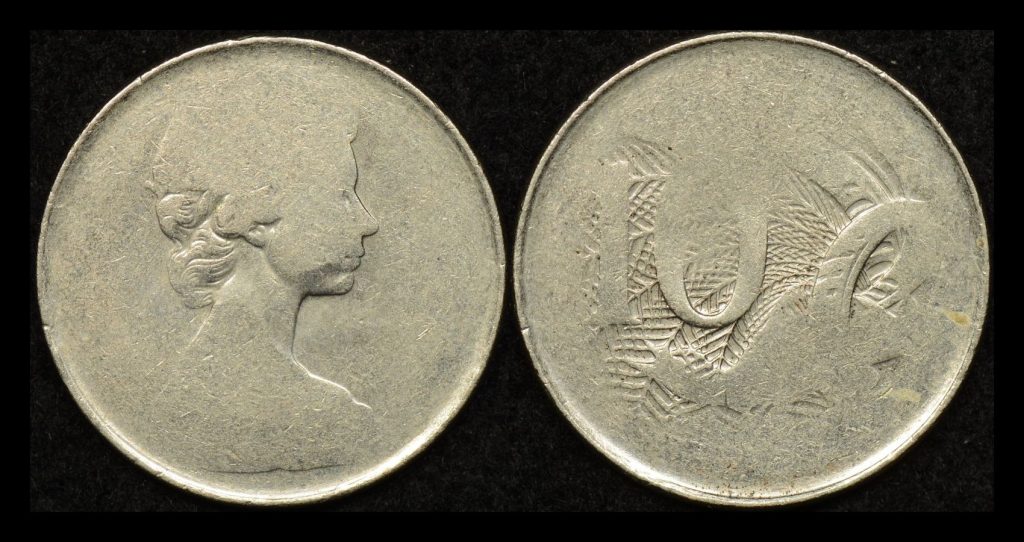As originally published in Australasian Coin and Banknote Magazine in June 2022.
What Went Wrong -error coins that escaped the Mint
Manufacturing coins is a high-pressure business, both figuratively and literally! What sorts of pressures are involved in making a coin? 35 tonnes and upward, with some sources suggesting proof coins need striking pressures of 500 tonnes and more [1]. Of course, the higher the pressure the more potential for damage and wear to both the coin dies and the coin press. On the other hand, if the pressure is too low the coin will be poorly struck and not meet the exacting standards that countries demand of their circulating coinage.
The coin shown with this article has clearly been struck at the lower end of the pressure range. Observe that the centre of the coin shows the ten cent design as you’d expect, the chin and hair of the Arnold Machin portrait of the Queen, and the feathers of the lyrebird as sculpted by Stuart Devlin. Move out toward the rim though, and the design fades smoothly until nothing is present at all. Note also that the characteristics of the strike are very similar on both sides. Clearly the coin shown is an error but what type of error?
The error coin here is usually called a ‘die adjustment strike’. The theory being that when a coin press and set of dies are first set up the press operator will gradually wind up the striking pressure to achieve a balance between quality of strike and minimising die wear and tear. As the pressure changes these ‘die adjustment strike’ coins are created. Presumably the test strikes would be collected up and scrapped for re-processing but every now and again one might sneak into the production coins and escape into circulation. It’s a nice theory and we’d like to think that this is how this coin came to be.
Of course, you’d see EXACTLY the same effect if there was a temporary fluctuation in striking pressure during a production run. This might be due to some sort of machine failure and could result in dozens of low-pressure strike coins being made and reaching circulation. We’ll never know if the coin shown was created as part of the setup process of a coin press or if it was a genuine error created during a production run of coins. Either way it managed to escape the Royal Australian Mint sometime between 1966 and 1984 and is a fine example of the so-called ‘die adjustment strike’ error.
Mark Nemtsas and Kathryn Harris own and run ‘The Purple Penny’ coin shop in Adelaide and are passionate about error coins.
- United States Mint : Coin Production [online] Available at: https://www.usmint.gov/learn/production-process/coin-production [Accessed 10 April 2022].



